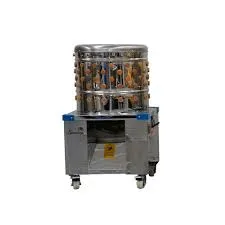chicken transport cage
Dec . 22, 2024 09:02 Back to list
chicken transport cage
The Importance of Chicken Transport Cages in Poultry Industry
In the poultry industry, the transportation of chickens from farms to processing facilities is a critical operation. To ensure the well-being of these animals and to maintain the quality of the meat, the use of specialized chicken transport cages has become standard practice. These cages are designed not only to facilitate the safe transit of chickens but also to minimize stress and injury during transportation.
Transporting chickens can be a challenging task due to their delicate nature and lively behavior. Chickens are prone to stress when moved, which can impact their health and the quality of their meat. For this reason, well-designed transport cages are essential. These cages are typically constructed from sturdy materials that provide adequate ventilation and protection from the elements during travel.
One of the primary functions of chicken transport cages is to prevent overcrowding. Overcrowding can lead to increased stress levels among the birds, resulting in fighting, injury, and even death. A standard transport cage is designed to hold a certain number of chickens comfortably, allowing them enough space to move and adjust to their surroundings. By ensuring that chickens are comfortably housed during transit, poultry businesses can reduce mortality rates and improve overall animal welfare.
Ventilation is another critical aspect of chicken transport cages. Proper airflow is necessary to maintain a stable temperature and minimize the accumulation of harmful gases and odors. Many modern transport cages feature design elements such as ventilation holes and mesh panels that allow for optimal airflow while keeping the birds secure. This helps to ensure that the chickens remain calm and healthy during transportation.
chicken transport cage

The physical design of the transport cage is also crucial in protecting chickens from injury. The cages must be robust enough to withstand the rigors of transportation, including rough handling and varying environmental conditions. Features such as reinforced walls, secure locking mechanisms, and non-slip bases contribute to the safety of the birds. The cages are often stackable, enabling efficient use of space during transport while ensuring stability throughout the journey.
Transport cages also play a significant role in biosecurity measures. Maintaining hygiene is essential in preventing the spread of diseases among poultry. Many transport cages are designed for easy cleaning and disinfection, which is vital in minimizing cross-contamination between shipments. Biosecurity protocols dictate that cages should be thoroughly sanitized before and after each use, thus reducing the risk of disease transmission.
Beyond practical considerations, the use of chicken transport cages can also contribute to the reputation of poultry producers. In today's market, consumers are increasingly concerned about animal welfare. Producers who prioritize the humane treatment of animals during all phases of production, including transportation, are more likely to attract conscious consumers. By adopting best practices in animal care, including the use of well-designed transport cages, producers can enhance their brand image and increase consumer trust.
As the poultry industry continues to evolve, advancements in technology and designs for chicken transport cages are being explored. Innovations such as lightweight materials, improved insulation for temperature control, and smart monitoring systems that track conditions within the cage are on the horizon. These advancements could further refine the process of chicken transportation, ensuring that birds are transported with the highest standards of care and efficiency.
In conclusion, chicken transport cages are a vital component of the poultry industry. They serve multiple purposes, including ensuring animal welfare, preventing injury, and facilitating biosecurity measures. By investing in high-quality transport cages and adopting best practices, poultry producers can enhance the health of their chickens, improve their operational efficiency, and meet consumer demand for ethically produced meat. As the industry continues to grow and change, the importance of these cages cannot be overstated—they are, quite literally, the transport vessels that navigate the path from farm to table.
-
Automatic Feeding Line System-Pan Feeder Nipple Drinker|Anping County Yize Metal Products Co., Ltd.
NewsJul.29,2025
-
Hot Sale 24 & 18 Door Rabbit Cages - Premium Breeding Solutions
NewsJul.25,2025
-
Automatic Feeding Line System Pan Feeder Nipple Drinker - Anping County Yize Metal Products Co., Ltd.
NewsJul.21,2025
-
Automatic Feeding Line System Pan Feeder Nipple Drinker - Anping County Yize Metal Products Co., Ltd.
NewsJul.21,2025
-
Automatic Feeding Line System - Anping Yize | Precision & Nipple
NewsJul.21,2025
-
Automatic Feeding Line System - Anping Yize | Precision & Nipple
NewsJul.21,2025






